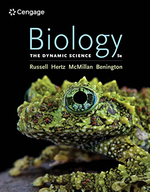Solution Found!
Which major groupings of animals defined on the basis of morphological characters have been confirmed by molecular sequence studies?
Chapter 31, Problem 1(choose chapter or problem)
Questions & Answers
QUESTION: Which major groupings of animals defined on the basis of morphological characters have been confirmed by molecular sequence studies?
ANSWER:Step 1 of 2
Molecular sequence studies, which involve comparing and analyzing the DNA or protein sequences of different organisms, have provided valuable insights into the relationships and classifications of various animal groups. These studies have confirmed the distinctions between the following major divisions:
1. Parazoa and Eumetazoa: Parazoa refers to the group of animals that includes the sponges (phylum Porifera). Eumetazoa, on the other hand, encompasses all other animal groups that display true tissues. Molecular sequence studies have confirmed that the Parazoa (sponges) are distinct from the Eumetazoa (all other animal groups), proving the division between these two major lineages.
2. Radiata and Bilateria: Radiata includes animals with radial symmetry, such as jellyfish (phylum Cnidaria) and sea anemones. Bilateria, on the other hand, comprises animals that display bilateral symmetry, such as insects, fish, mammals, and humans. Molecular sequence studies have supported the distinction between Radiata and Bilateria, revealing genetic differences that align with the observed morphological differences between these two groups.
3. Protostomia and Deuterostomia: Protostomia and Deuterostomia are two major groups within the Bilateria. Protostomes include animals such as insects, mollusks, and annelids, while Deuterostomes include animals such as vertebrates (including humans), echinoderms, and chordates. Molecular sequence studies have strongly supported the division between Protostomia and Deuterostomia, revealing distinct genetic characteristics that distinguish these two groups.
